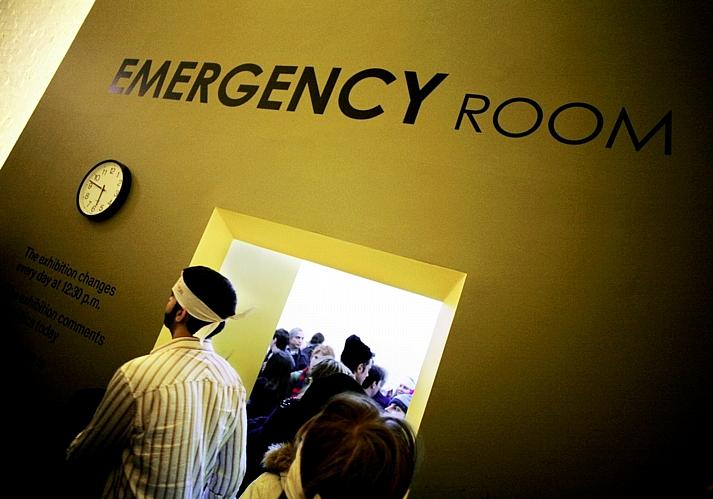Expanding coverage was supposed to curb ER visits — what happened?

In ecology, scientists often look to “indicator species” such as frogs to assess the fitness of habitats. In the health care system, you could say the barometer for fitness is the emergency room.
For a long time now, ERs have acted as a safety net for the uninsured. The bills may be high, but treatment cannot legally be refused to people without insurance, who often show up desperate and without any other options for care. As a result, hospitals end up tending to people who might easily be seen in a doctor’s office at a much lower cost.
During the debate that preceded Obamacare, supporters used ERs to rationalize why offering insurance to more people made sense. In a recent New York Times op-ed, Dr. Ezekiel Emanuel, one of the architects of the Affordable Care Act, quoted President Obama:
One of the areas where we can potentially see some saving is a lot of those patients are being seen in the emergency room anyway, and if we are increasing prevention, if we are increasing wellness programs, we’re reducing the amount of emergency room care.
It’s logical: Decrease the numbers of uninsured and emergency room visits should go down. But as Emanuel points out, the facts point to a different picture, one in which people who now have insurance use the emergency room more often.
Recent data from the Office of Statewide Health Planning and Development (OSHPD) supports this idea. The data shows that during the first quarter of 2013, the state’s emergency rooms treated nearly 800,000 patients with Medi-Cal, the state’s Medicaid program for low-income residents. By the first quarter of 2014, that number had increased to about 1.16 million.
During the same period, under the ACA’s expansion of coverage, California began offering Medi-Cal to not just pregnant women, mothers, children and the disabled, but to all adults who earned less than 138 percent of the federal poverty level. In the fall of 2013, Med-Cal covered 8.6 million people. By late 2014, that number had increased to 11.3 million.
From the third quarter of 2013 to the fourth quarter of 2014, the OSHPD data shows that the number of uninsured who visited ERs also decreased, from 450,000 in 2013 to 278,000 in 2014. Even so, the data appear to indicate that rather than treating fewer total patients, hospitals were now seeing more patients, suggesting that the expansion of coverage was actually increasing the number of ER visits.
The data in California are consistent with a new national survey of physicians, who were asked how they thought ER visits had changed since January 2014.
Researchers who studied Oregon’s experience when that state offered a lottery for Medicaid in 2008 found that having insurance increased the probability that people would use the emergency department. Likewise, in Colorado, from the first quarter of 2013 to a year later, the number of visits by Medicaid patients increased from 28 percent of the total to 35 percent with an overall increase in the total emergency department visits, according to a report from the Colorado Hospital Association.
But these trends are not the end of the story, said Dr. Wes Curry, the chief executive officer of CEP America, a physicians network that contracts with hospitals.
“I don’t see this as an ongoing trend,” Curry said. “I think we’re going to see a spike in visits for a variety of reasons. Once people get more familiar with their new insurance and what their options are, I think you will find that they will seek other places other than emergency department.”
Similarly, in his recent Times op-ed, Emanuel says that offering insurance is only the first step when it comes to curbing the overuse of emergency departments.
“Changing behavior is very hard,” Emanuel writes. “It can’t be accomplished just by providing insurance or a wellness program and wishing people good luck. Indeed, Mr. Obama overstated how easily expanding insurance would reduce emergency room use.”
As Ezekiel argues, you can’t just expect people to stop turning to the ER — our health care system must engage people with incentives and other strategies, including educating people on where to seek out care when it’s not an actual emergency.
Photo by Thierry Geoffroy via Creative Commons.
